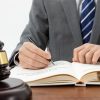PPC is a cost-effective technique to help the business grow its brands and achieve higher profits as well as gain customer trust.
When initiating a PPC or google ad campaign, the first thing is to look at your budget. The budget is the amount of money you would wish to spend on online advertising, whether to increase sales, boost brand awareness for acquisition efforts, or email sign-ups.
There are several factors that are dependent on creating the budget:
- Lead quality.
- Visits frequency.
- Conversion rate.
- Cost-per-clicks (CPC)
- Your location.
However, the success of paid advertising intuition depends on how well you plan.
The effective implementation of an action plan in the budgeting process can assist you in uncovering the full potential of the business’s digital effort. Thus, in this article, you will discover methods to create a budget for your PPC ads smartly.
Why Is Budgeting So Important In PPC?
Whether you are a small business or a large part of the multi-national, it is integral that you set a budget for every PPC campaign that you run. This is because, without any clear budget, you would be spending far more than you should and will not be able to maintain any calculation for your cost-per-conversion.
If you can face revenue loss and a significant dent in your finances, you can get assistance from PPC management services.
If there is any budget mismanagement, it would cause your business to face serious financial ramifications outside the advertising. So, maintain a lid on your business spending and know where the money goes.
Smart Ways To Manage PPC Budget
Despite the PPC campaign being a great way of obtaining long-term growth and revenue, it is only successful if the ROI and budgeting are managed efficiently.
Here is a list of seven smart ways to manage your PPC budget.
1. Ensure Using Historical Data
The use of a spending projection tool offers valuable insight into projected spending. When you analyze historical and recent trends and performance, you can automatically calculate the projected spending range.
In this way, you can monitor the spending all throughout the week and proactively identify the potential overspending, thereby ensuring that you stay within the desired budget limitations.
2. Allocate Budget To Enhance Performance
You can find an optimization tool if you plan to optimize your budget. One is to optimize budgets, and the second is to optimize budgets across the platform.
However, it is vital to note that Google ads and other ad platforms usually operate with budgets for campaigns and set levels, along with the shared budgets encompassing multiple ads.
However, the use of optimization tools will assist in bridging the gap between the targets set month-wise and are commonly used by companies and the daily budgets required by the ad platforms.
3. Identify Best Keyword For Your Marketing Objectives
Before you can identify the PPC budget, specifically for the search campaign, you need to place the search terms that the potential customers use when searching for products.
However, this approach can be straightforward for businesses such as e-commerce stores; it can also get tricky if the product is a solution to a niche issue. Moreover, you can determine how to track the marketing dollar’s effectiveness best.
In addition to that, you can also focus on significant terms that have immediate purchase intent. When there is a high-intent keyword, it is likely to have an enhanced click-through rate and concession rate.
4. Prevent Overspending Through Automated Budget Control
In order to automate your budget management, be flexible with the advertisement on Google.
With the help of the application, you can check the updates every single hour. Thus, by setting up the script, you can automatically process the pause campaign keywords and label them when the cost exceeds the maximum.
5. Avoid Underspending
The use of Budget Management Enhanced Script, you can effortlessly stay on track with the client’s budget target and make sure there is optimal spending without any trouble of constant panning and manual adjustments.
When you combine the scripts, you can stop budgets from overspending and gain better control over monthly spending.
6. Estimate Your Profit
You can use return on ad spend (ROAS) as an alternative to estimate digital advertising performance and record most marketers’ tactics.
You should estimate how to measure target ROAS. It is the ratio between the amount spent on an ad campaign and the total revenue that is bright with it.
The decision of an ad campaign will generate revenue; you are required to estimate the customer’s LTV against the cost of customer acquisition for each ad campaign.
7. Run Your Planner Report
You can use Google Keyword Planner, a powerful tool that allows you to refine the audience and budget.
It also offers several options that allow you to look for new keywords and combine a list, forecast cost performance, get clicks, and show search volume trends and data.
Summing Up
Thus, it is clear that every business’s first approach should be to manage costs and be mindful of how and where they spend.
Depending on several factors, which include the business goals, your preference, and ad spending. Therefore, when it is catered effectively, it can result in an efficient PPC campaign that brings in favorable sales units.
Remember that pulling meaningful data can support your decision when working through these steps, either the historical PPC campaign or the insight gained from Google Analytics.
Just ensure that you will use the right budgeting methods from the beginning to complete the work correctly.
Read Also :





















